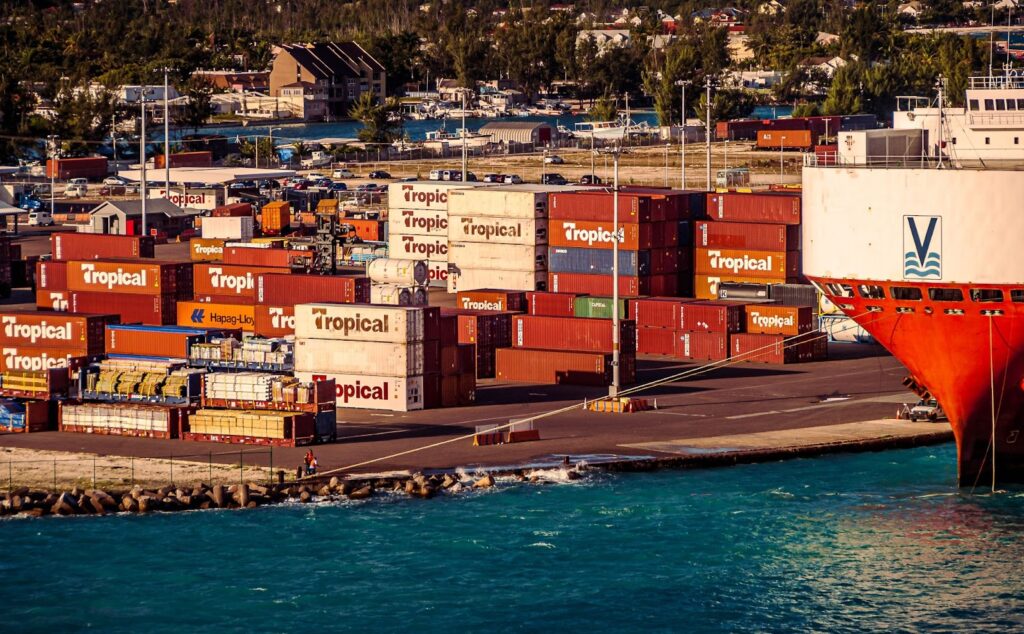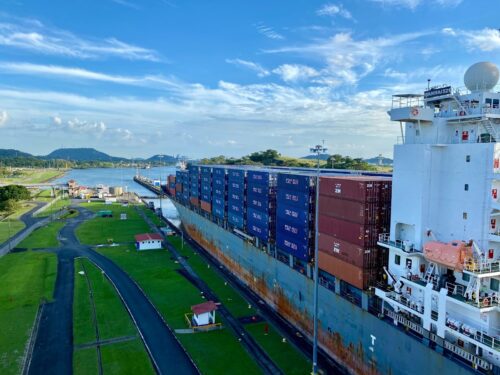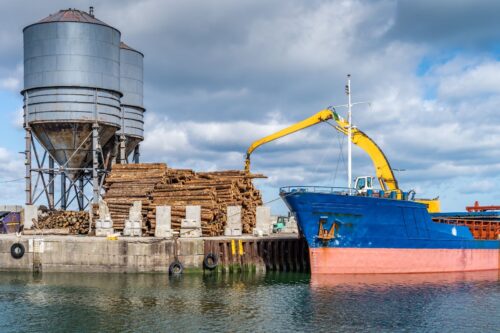Neo Bulk Cargo: Meaning, Types, and Examples

The shipping industry, the cornerstone of global trade, has witnessed the rising popularity of a distinct cargo category called neo bulk cargo. This innovative cargo type transforms the traditional bulk cargo model by integrating specialized equipment and practices for shipping various goods.
In this article, we’ll delve into neo bulk cargo, its various types, and how it’s revolutionizing businesses worldwide.
What Is Neo Bulk Cargo?
In the realm of ocean vessels and shipping, bulk cargo has always been a fundamental component. However, a recent shift towards a more specialized approach has given rise to what we now call “neo bulk cargo.”
Neo bulk cargo represents a form of general cargo that, while sharing some similarities with conventional bulk cargo, requires distinct handling and transport procedures.
Neo Bulk Cargo Facts
Advancements in shipping have paved the way for the increased use of neo bulk cargo, leading to many advantages that include the ability to ship goods in confined shipping containers and enabling secure transportation.
Specialist carriers, known as neo bulk carriers, have emerged, equipped with the necessary gear to handle these specific forms of cargo efficiently.
Unlike bulk cargo, which typically includes homogenous goods like coal, grain, or oil, neo bulk cargo goods can range from steel products to vehicles, all necessitating their own set of shipping requirements. With the increased use of neo bulk cargo, the demand for neo bulk carriers, particularly RoRo carriers, has risen significantly.
Types of Neo Bulk Cargo

Several forms of cargo fall into the neo bulk category, including steel products, forest products, project cargo, bulk minerals, vehicles, and food products.
Steel Products
The steel product category includes everything from coils to pipes and other large or awkwardly shaped steel products. These goods require specific handling techniques and are often shipped using special equipment to ensure secure transport.
Forest Products
Forest products, such as logs, lumber, and even waste paper bundles, also fall under the neo bulk cargo category. These products require carriers that can accommodate their unique shape and size while ensuring safe and efficient transport.
Project Cargo
Project cargo comprises oversized, heavy, or otherwise complex equipment and machinery components. This cargo type often includes items for large infrastructure or industrial projects and requires dedicated equipment for loading, transport, and unloading, further demonstrating the versatility of neo bulk cargo handling.
Bulk Minerals
Another form of neo bulk cargo includes bulk minerals such as gypsum, cement, or limestone. Although similar to some traditional bulk cargo, these minerals may require specialized handling techniques due to their weight or particle size.
Vehicles
Vehicle shipping is one of the most recognizable forms of neo bulk cargo. Cars, trucks, or other motorized equipment are often shipped using RoRo carriers, which allow these secure shipped vehicles to be driven directly onto the ship. This ensures their secure transport, further enhancing the value of neo bulk cargo in global trade.
Food Products
From packaged food items to refrigerated goods, food products require specific shipping conditions and equipment to ensure safe transportation. Neo bulk cargo’s ability to offer this specialized handling level sets it apart from traditional counterparts.
Neo Bulk Cargo Uses and Examples

The flexibility and utility of neo bulk cargo shipping span industries from construction to energy, demonstrating its versatility.
Construction
In the construction sector, neo bulk cargo is a linchpin for efficient project execution. Crucial construction materials often classified as neo bulk cargo due to their confined nature, including steel beams, pipes, and cement, are shipped worldwide.
These commodities are neither fluid nor granular, thus straddling the line between traditional bulk and general cargo. The specialized handling techniques required to ship these goods make neo bulk cargo an invaluable resource for the construction industry.
Automotive
For the automotive industry, neo bulk cargo plays a significant role. Automobile manufacturers rely on the shipment of assembled vehicles, engines, and parts, each of which qualifies as neo bulk cargo.
With the help of RoRo carriers and containerized shipping solutions, this industry ensures safe and secure shipment of goods. These distinct cargo category’s advantages streamline the logistics process, allowing companies in the automobile industry to meet their global supply chain needs effectively.
Agriculture
In agriculture, neo bulk cargo sees extensive use in transporting bulk food products such as grains, sugar, and even refrigerated or frozen goods. These goods require specialized shipping conditions, and the precise, tailored solutions provided by neo bulk carriers ensure that these agricultural products reach their destinations in the optimal state, preserving quality and preventing waste.
Energy
The energy sector also leverages the capabilities of neo bulk cargo. Whether it’s fossil fuels like coal, oil, and gas, or components of renewable energy infrastructure such as wind turbine parts, these goods often fall into the neo bulk category. This diverse range of goods showcases the adaptability of neo bulk cargo shipping, catering to both traditional and emerging energy sectors.
Paper and Pulp
In the paper and pulp industry, waste paper bundles are common neo bulk cargo. The need for efficient recycling processes is critical, and the ability to transport waste paper in bulk, efficiently and economically, is vital. These recycled materials, securely shipped via specialized carriers, represent a significant proportion of neo bulk cargo, underlying the sustainability potential of this shipping method.
Heavy Machinery
Finally, heavy machinery, such as large-scale industrial equipment and construction machinery, represents another application of neo bulk cargo. These goods often require specialized carriers due to their size, weight, and unique shipping requirements. In these cases, the tailored solutions offered by neo bulk cargo carriers provide an effective means of transport, bolstering the logistics capabilities of industries worldwide.
Advantages and Disadvantages of Tail Lift Trucks
Tail lift trucks are a common sight in the neo bulk cargo transportation industry, providing a range of benefits and some drawbacks. Logistics planners must understand these advantages and disadvantages to make the best decision for their specific needs.
Advantages
Tail lift trucks bring versatility to handling various cargo types, including those classified as neo bulk. Their lift mechanism allows for safe and efficient loading and unloading of goods, especially when dock facilities are unavailable. This flexibility can prove cost-effective by reducing the need for additional handling equipment.
Additionally, by reducing the manual handling of goods, tail lift trucks can lower the risk of workplace injuries, which improves safety. Lastly, these trucks often carry a significant amount of cargo, leading to fewer trips and, thus, lower environmental impact.
Disadvantages
However, despite the many benefits, there are some disadvantages to using tail lift trucks. First, these trucks require special handling to ensure safety during loading and unloading, which can sometimes slow down the process.
Furthermore, they may pose security risks if not properly secured during transportation. The openness of the truck bed can also make cargo more susceptible to damage from inclement weather, making them less suitable for transporting goods to their final destination. Finally, the need for regular maintenance of the lift mechanism can lead to additional costs.
Frequently Asked Questions
Navigating the world of neo bulk cargo may present some common inquiries. Below, we tackle a few of these frequently asked questions, providing concise answers to help further your understanding of this vital sector in global trade.
How is neo bulk cargo loaded and unloaded?
Neo bulk cargo is typically loaded and unloaded using specialized equipment such as cranes, forklifts, or in some cases, the tail lift mechanism of trucks.
What are some factors to consider when choosing between neo bulk cargo and containerized cargo?
Factors include the nature and size of the goods, handling requirements, cost, and specific delivery requirements at the destination.
Final Thoughts
The world of neo bulk cargo is expansive, offering flexibility and solutions for various industry needs. Despite its distinct handling requirements and some challenges, its potential to transform the shipping industry is undeniable.
From its role in sectors like construction, automotive, and agriculture to its impact on global trade, the versatility and utility of neo bulk cargo are noteworthy. As industries continue to evolve, so will the methods of cargo shipping, and neo bulk cargo will undoubtedly play a significant role in that evolution.
